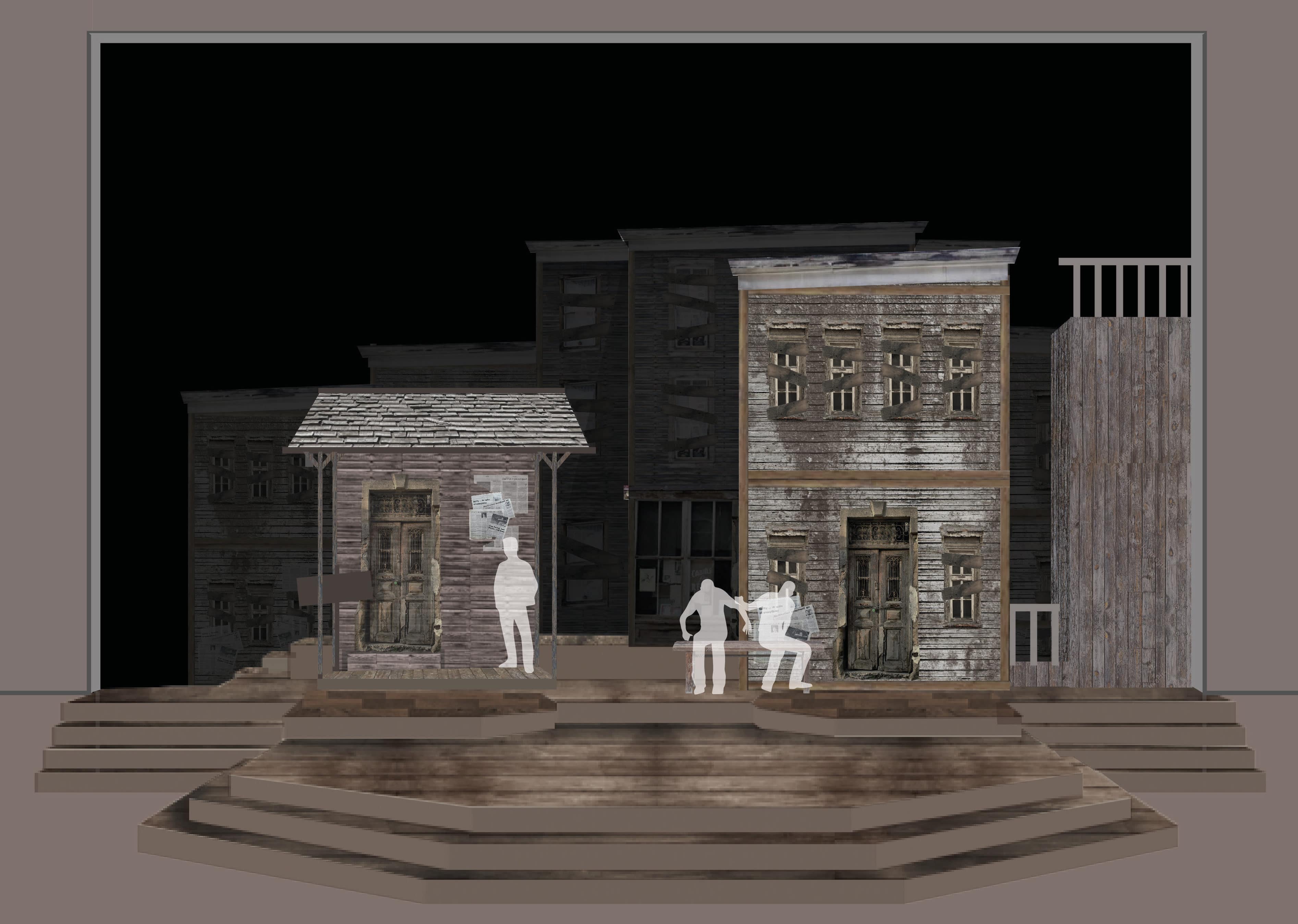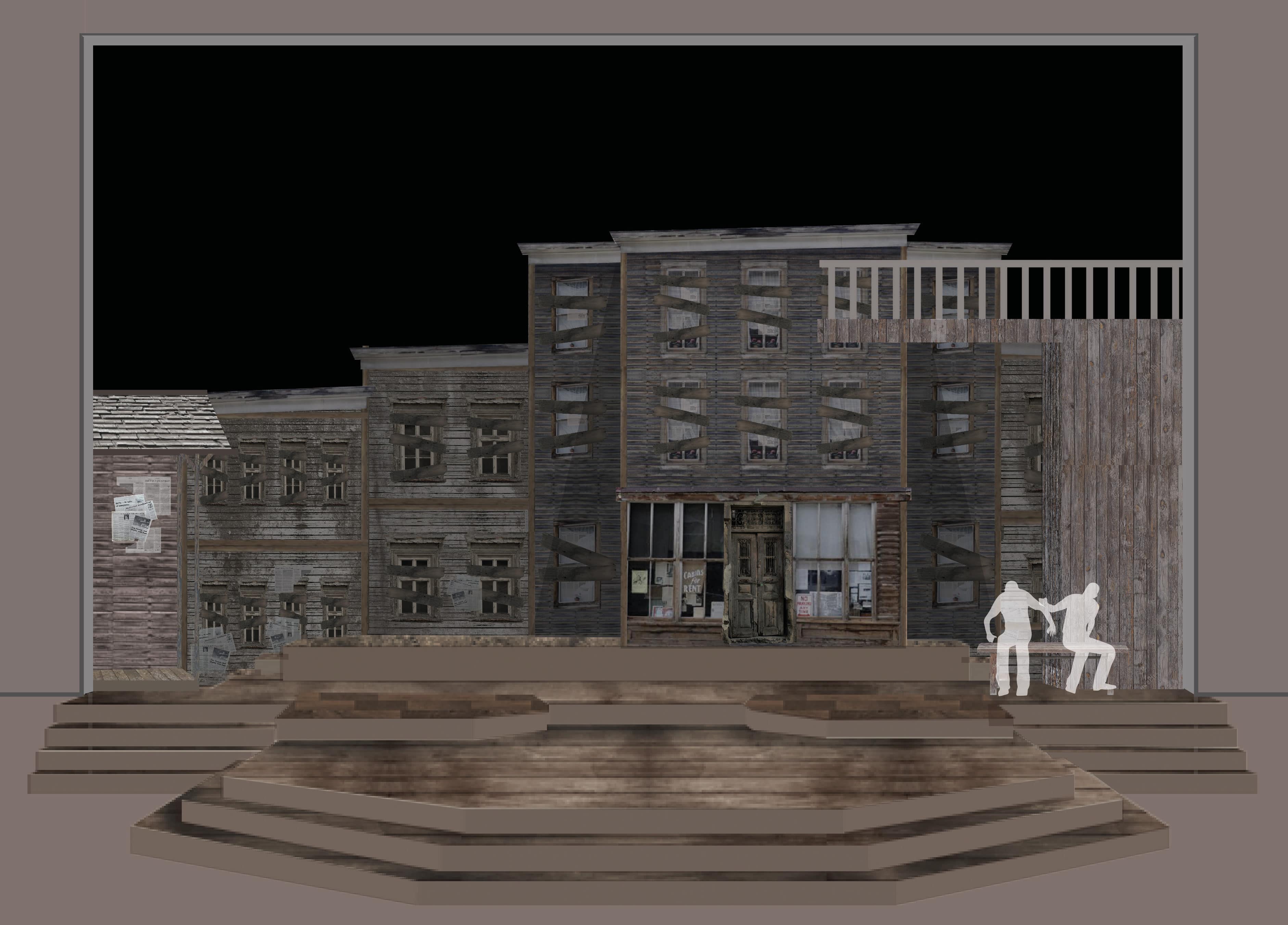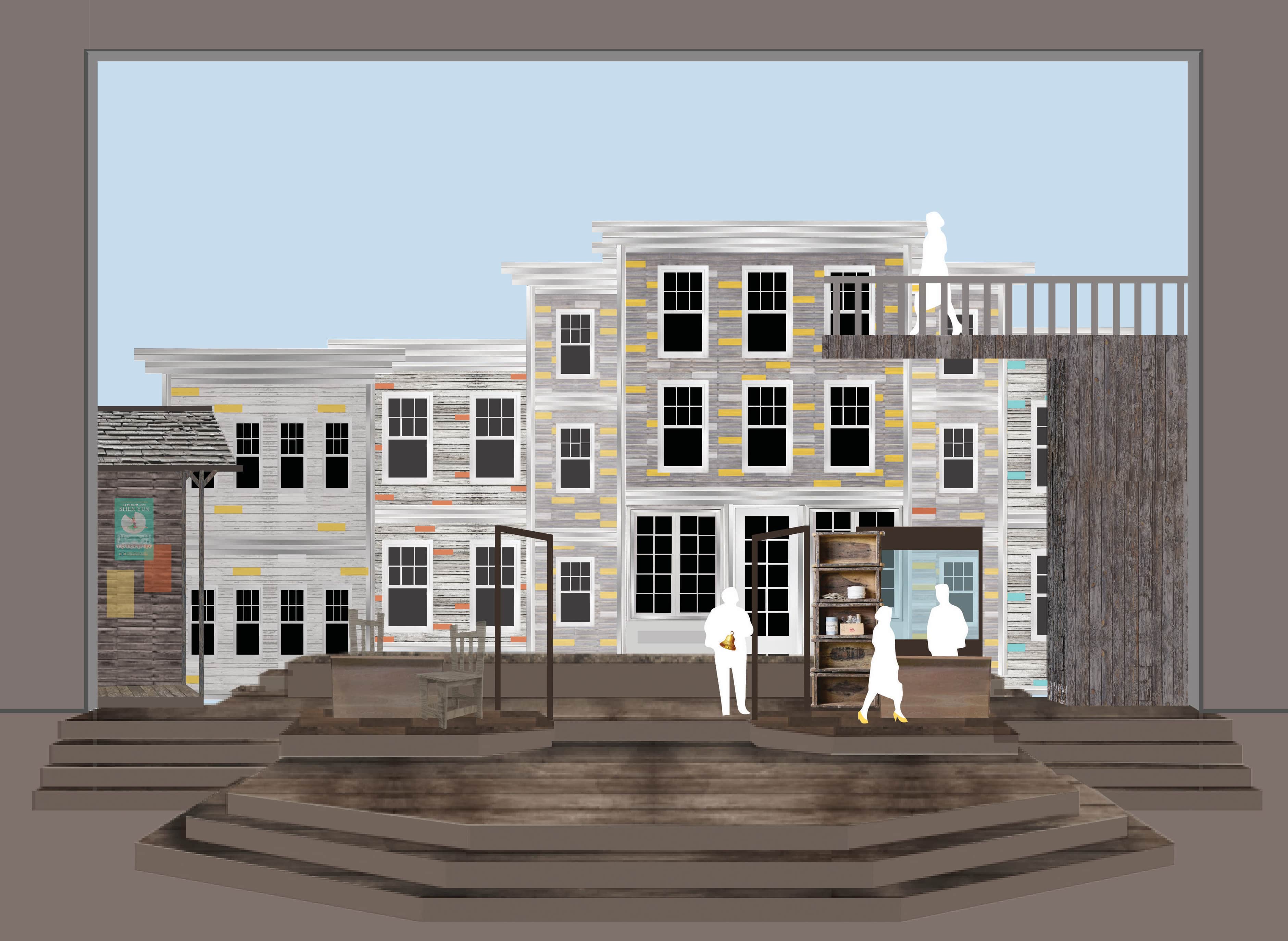



The main concept of the play was to tackle the idea of Capitalism vs. “Morality” in a sense that the play has a strong emphasis on the idea of change within the town when they are introduced to more money. We were also interested in trying to create a comedic and horror feeling throughout the play by creating a contrast between how the actors are feeling vs. what they are actually doing. We were also interested in the concept of dehumanization in terms of using bodies as objects. For example, a townsperson could act as a bench for Claire to sit on in the woods, as the bell for the stores, or as trees in the forest. This helps emphasize the idea that Claire, the one with all the money, has the all the power in comparison to the town. This play is not a period piece and actually transforms from a 1930s great depression feeling to a 1950s futuristic feeling when the town is introduced to money. We were also interested in the idea of adding a touch of theatricality to how the scene changes from one scene to another by having the townspeople literally come onto stage in front of the audience and pull the set pieces on or off stage with ropes or other tools, like pulling the train station off stage after the opening scene). This helps emphasize the idea that they do not have money because they have to do all of these changes by themselves and that one space also acts as another space.
In the initial visual research we were all very interested in the use of color in the play. The play transforms from this grey, dull colored set to a more vibrant set when they begin to obtain more money. There is also this underlying tone that even as the town begins to grow more vibrant, there is something still wrong underneath all these layers of color. For the town, specifically, we wanted to go for a ghost town, tiny town aesthetic where the town starts off run down and made of these wooden materials, but slowly gets cleaner as the play progresses. As it begins to get cleaner, color is slowly also being introduced to the town, not only through the costumes (bright yellow shoes) but also through the subtle use of colors (yellow, red, blue) on the facade of the towns buildings. This is contrasted by the scenic pieces that are still on the set (the balcony and the train station). At the end of the play the background is completely transformed and everything becomes these bright colors. It also goes for this more 1950s futuristic feeling by using chrome frames on the buildings rather than wood. This helps emphasize the idea that this is not a specific period piece and can happen at all times and modern times to help create this brightness on set to contrast the unsettling actions happening on stage (Ill being murdered).
As a team, we were interested in trying to create the feeling of an artificial world where the characters sacrifice their humanity for money to make their lives “better”. This is emphasized by the idea of Anachronism (in the use of chrome on the set), which is completely unnecessary in having on their buildings but makes everything feel brighter and shinier, especially when colored lights reflect on it. We were also interested in the idea of having a Reality Television feeling at the very end of the play where everyone is gathered to talk about Ill and ultimately kill him, allowing the audience to feel very overwhelmed by everything happening all at once at the end of the show.










The characters in “Ghost” all hold their own secrets. They hide these secrets in a number of layers that are peeled away throughout the play, but these layers cause the characters, under all of these layers, begin to have this disease sort of feeling feeding on all the secrets that they are holding and festering within them. The play is about an idea of secrets being a disease and it affecting the lives of them all in their own way.
The design focuses on trying to create an unsettling feeling of layering and isolation by creating an environment that is completed surrounded by these walls surrounded by fog and trees outside that can barely be seen. There are two separate spaces, the interior space and the conservatory connected to the outside with a large, open window. The two spaces mimic one another in furniture but the back room is barely used and is covered up by a set of sliding french doors to emphasize the idea of a hidden secret and underuse of a large space.



